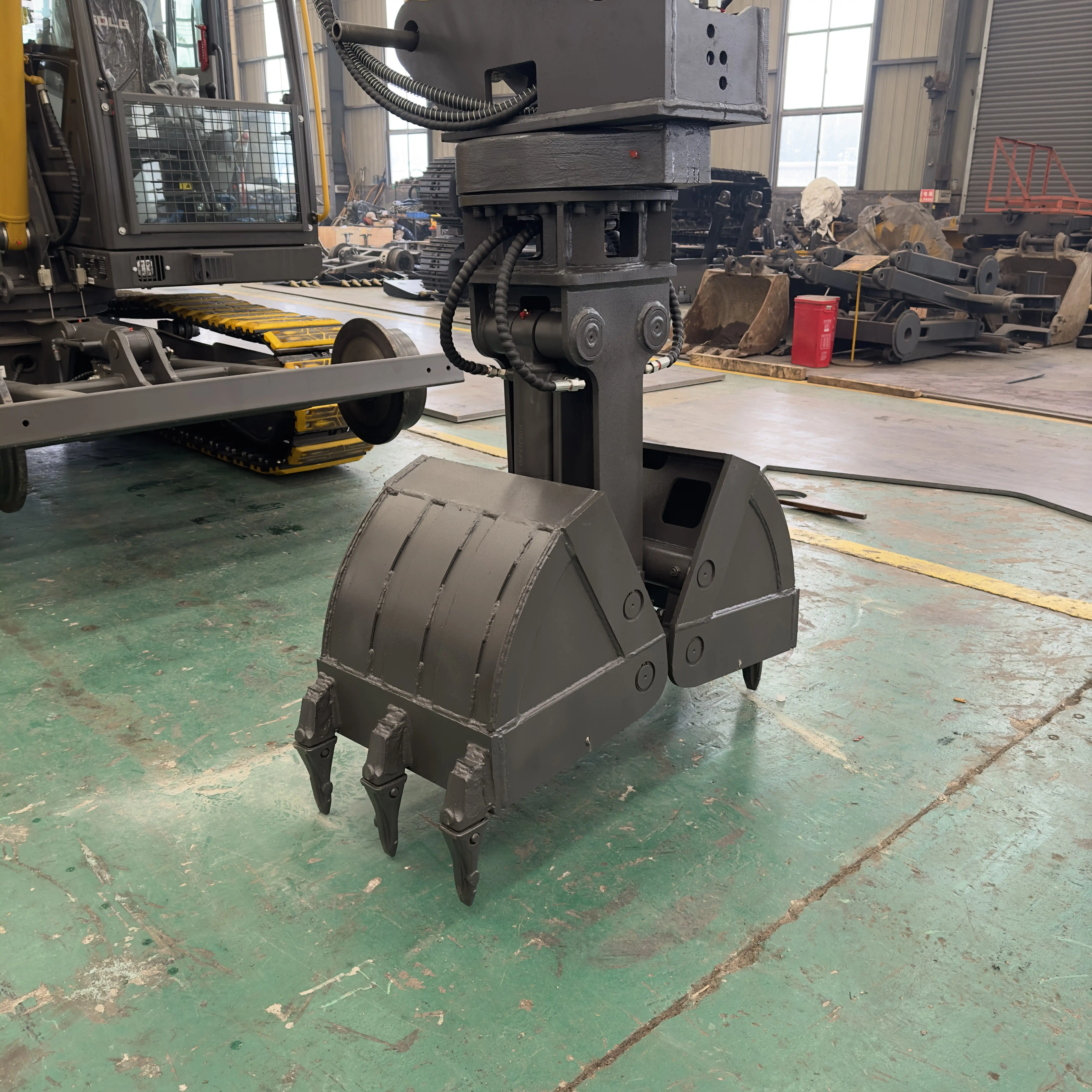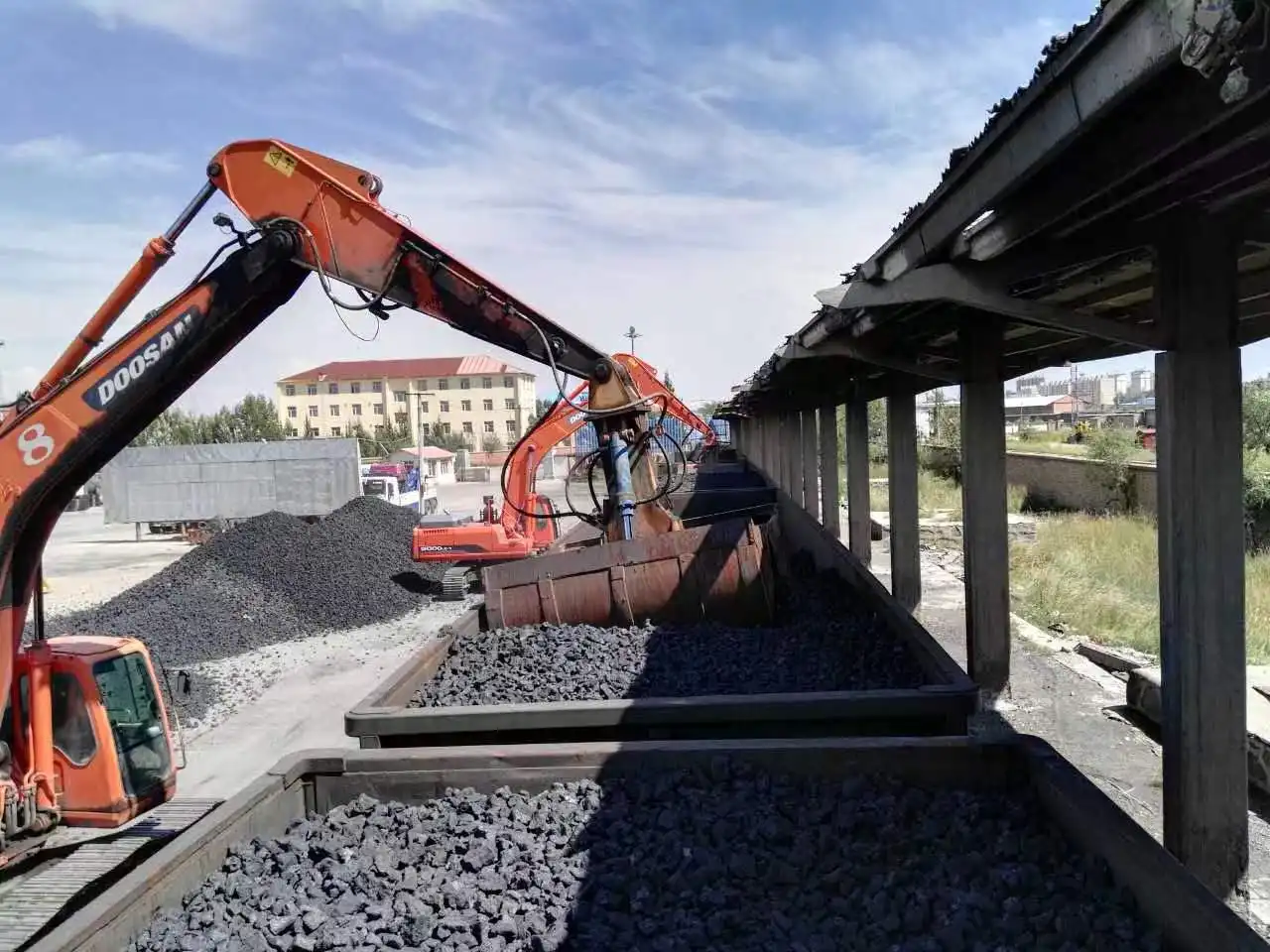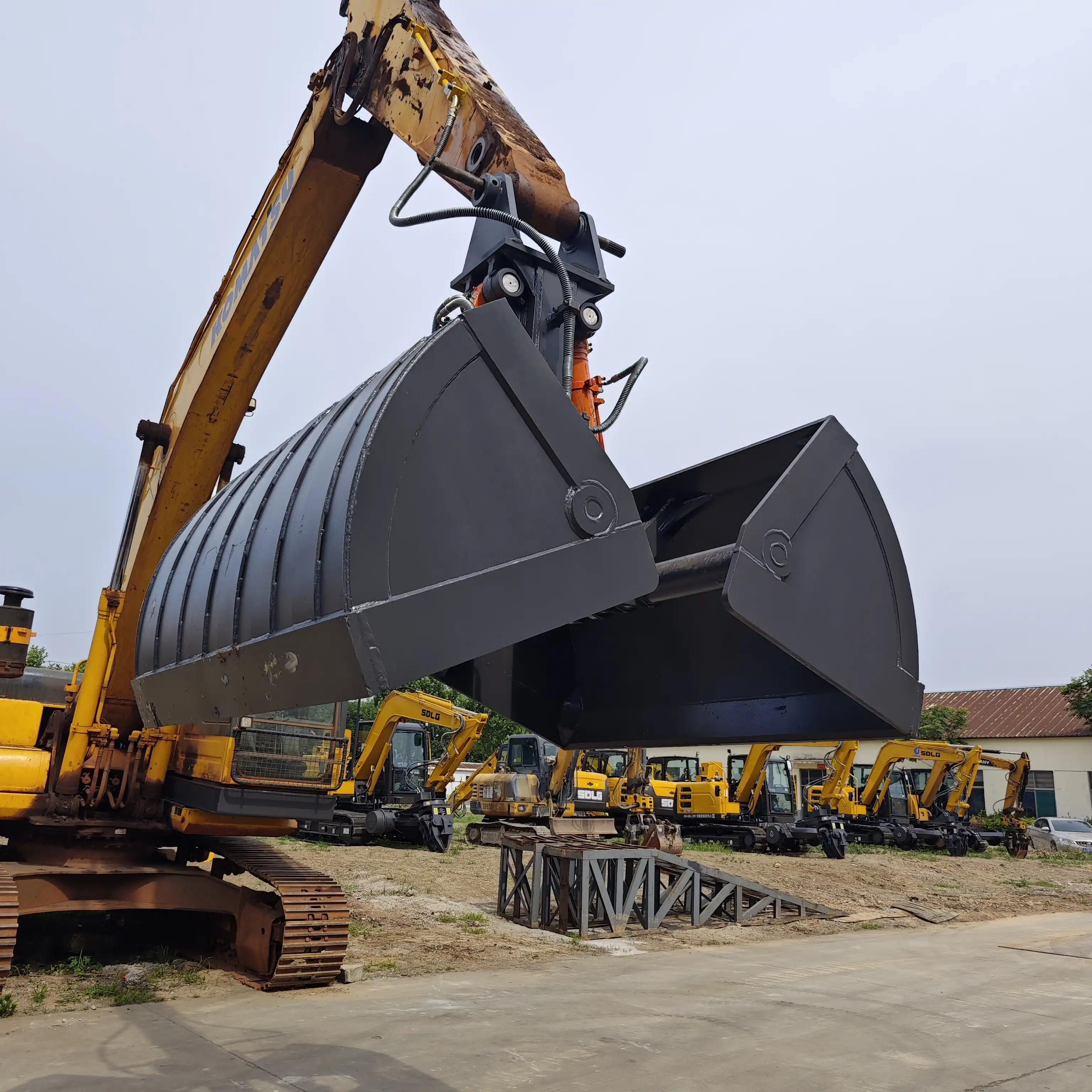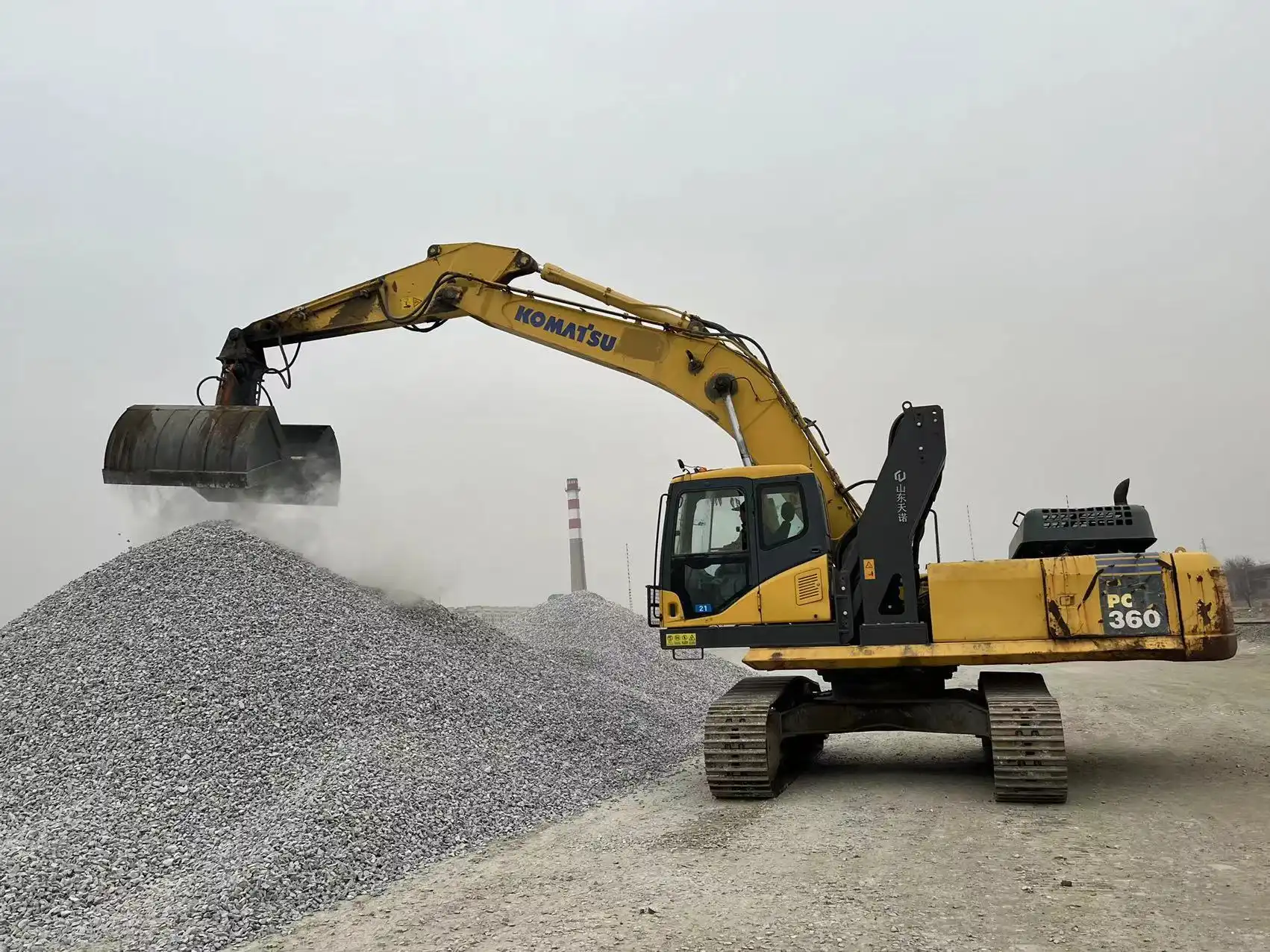Clamshell Bucket Parts
The clamshell bucket consists of several crucial components that work in harmony to deliver reliable performance across demanding applications. These specialized excavator attachments rely on a precise arrangement of interconnected parts, each engineered to withstand extreme conditions while maintaining operational efficiency. The primary components include jaw plates that directly engage with materials, a robust hinge shaft that enables the pivoting action, and a sophisticated system of connecting rods and hydraulic cylinders that generate the necessary force for grabbing operations. Additional elements such as bushings, pins, and protective covers complement the main components, creating a comprehensive assembly designed for durability. Understanding these individual parts and their relationships within the overall mechanism proves essential for proper maintenance, troubleshooting common issues, and maximizing equipment lifespan.
Jaw Plate

Material Composition and Design
The jaw plates form the primary contact surface of a clamshell bucket, engaging directly with various materials during operation. These components undergo rigorous engineering to balance strength with weight considerations. Manufacturers typically craft these plates from high-carbon steel alloyed with manganese, chromium, or molybdenum to enhance durability and wear resistance. The metallurgical properties achieve Brinell hardness ratings between 400 and 500 HB, providing exceptional resistance against abrasive materials.
The plate design incorporates strategic thickness variations, with reinforced sections in high-stress areas while maintaining lighter profiles elsewhere to optimize overall weight. The interior surface often features wear-resistant overlays or replaceable liners that absorb operational impact, protecting the structural integrity of the main plate. Edge profiles vary based on application requirements – serrated edges excel in breaking compacted materials, while straight edges provide cleaner material separation in general excavation work.
Wear Resistance Features
Continuous exposure to abrasive materials necessitates specialized wear resistance features in jaw plates. Leading manufacturers implement carbide inserts along cutting edges, dramatically extending service life in applications involving rock, concrete, or other highly abrasive materials. These inserts maintain sharp edges despite repeated impact, ensuring consistent grabbing performance throughout the component lifecycle.
Advanced surface treatments such as induction hardening create a gradient of hardness across the plate surface, combining a tough interior core with an exceptionally hard exterior layer. This dual-property structure prevents crack propagation while maintaining surface hardness. Some premium clamshell bucket models feature replaceable wear strips along high-friction zones, allowing for cost-effective maintenance without requiring complete jaw replacement.
Customization Options
Jaw plates offer numerous customization possibilities to address specific operational requirements. Perforated designs allow water drainage when handling waterlogged materials, reducing unnecessary weight while maintaining structural integrity. Specialized coatings provide corrosion resistance for marine applications or chemical protection for industrial material handling tasks.
Application-specific adaptations include extended jaw profiles for increased capacity, reinforced corner sections for demolition work, and specialized geometries for handling unique materials like railway ballast or forestry waste. Custom jaw configurations enhance productivity by minimizing material spillage and maximizing filling efficiency. The attachment interface can accommodate quick-connect systems that facilitate rapid bucket changes without extensive downtime, allowing a single excavator to utilize various jaw configurations throughout a workday.
Hinge Shaft

Structural Importance
The hinge shaft represents the central pivot point of a clamshell bucket, bearing tremendous loads during operation while enabling smooth articulation between the two jaw assemblies. This critical component experiences complex force vectors – rotational torque during opening/closing operations combined with linear stress when lifting heavy materials. The shaft diameter typically ranges from 50mm to 150mm depending on bucket size, with larger excavator attachments requiring proportionally robust shaft dimensions.
Engineering considerations include fatigue resistance, as the shaft undergoes thousands of load cycles throughout its operational life. The metallurgical composition typically features alloy steel with carefully controlled carbon content, delivering optimal tensile strength while maintaining sufficient ductility to absorb operational shock. Heat treatment processes like quenching and tempering establish an ideal microstructure that resists crack formation under cyclic loading conditions.
Bearing System Integration
Precise bearing integration ensures smooth shaft rotation while minimizing friction and wear. Bronze bushings or roller bearings create a wear interface between the rotating shaft and stationary bucket frame, distributing operational forces across a broader contact area. This integration includes sophisticated sealing systems that prevent contamination from entering the bearing assembly – a critical consideration in dirty operating environments.
Lubrication pathways machined into the shaft assembly allow regular greasing of bearing surfaces, ensuring consistent performance while extending component life. Advanced designs incorporate self-lubricating composite bearings that reduce maintenance requirements in remote operating locations. The bearing assembly dimensions require precise engineering tolerances, typically maintained within 0.05mm to prevent premature wear while allowing proper articulation.
Maintenance Requirements
Proper hinge shaft maintenance significantly impacts the overall lifespan of a clamshell bucket. Regular inspection protocols should check for signs of uneven wear, surface scoring, or developing cracks – particularly at stress concentration points. Maintenance technicians must verify proper torque specifications on retaining hardware to prevent shaft movement that could accelerate bearing wear.
Lubrication represents the most crucial maintenance activity, with greasing intervals determined by operating conditions – dusty environments require more frequent attention than cleaner applications. Proper greasing techniques involve purging old lubricant by continuing application until clean grease emerges from relief points, ensuring complete bearing protection. Re-bushing or shaft replacement becomes necessary when clearances exceed manufacturer specifications, typically detected through visual inspection or measurement of jaw movement during operation.
Connecting Rod And Hydraulic Cylinder

Force Transmission Mechanics
Connecting rods translate hydraulic cylinder force into the rotational movement required for jaw operation. These components experience both tension and compression forces during different operational phases, necessitating robust design and materials. The rod geometry optimizes force transfer efficiency while maintaining structural integrity under load. Most designs implement a tapered profile that distributes stress concentrations away from attachment points, preventing premature failure.
The connection points incorporate hardened pins that allow articulation while minimizing wear at these critical interfaces. Pin diameters range from 30mm to 100mm depending on bucket size, with larger models requiring proportionally robust connections to handle increased operational forces. The connecting rod assembly operates on mechanical advantage principles, multiplying hydraulic force through strategic pivot point positioning to generate substantial gripping pressure at the jaw plates.
Hydraulic System Components
The hydraulic cylinder forms the power generation center of the clamshell bucket, converting fluid pressure into linear force. These cylinders operate at pressures ranging from 3,000 to 5,000 psi, generating forces from 5 to 50 tons depending on cylinder bore diameter and system pressure. Cylinder construction features seamless steel tubing with precision-honed interior surfaces that minimize friction while preventing fluid leakage around the piston assembly.
Key components include the cylinder barrel, piston, rod, seals, and end caps – each engineered for specific performance characteristics. The piston rod undergoes chrome plating or other surface treatments to enhance corrosion resistance and provide a smooth operating surface for seal contact. Seal systems employ multiple components including wiper seals that prevent contaminant ingress, pressure seals that contain hydraulic fluid, and buffer seals that absorb pressure spikes during operation.
Protection Features
Operating in harsh environments necessitates comprehensive protection features for hydraulic components. Cylinder rod guards shield exposed surfaces from impact damage, particularly important in demolition or forestry applications where flying debris presents a constant hazard. These guards maintain operational freedom while preventing direct impacts that could score rod surfaces and compromise seal integrity.
The hydraulic lines incorporate reinforced hoses with protective sleeves at potential wear points, preventing abrasion damage during bucket articulation. Quick-connect couplings feature dust covers that maintain cleanliness when disconnected, preventing contamination from entering the hydraulic system. Advanced clamshell bucket designs incorporate internal pressure relief valves that prevent system damage during overload conditions, automatically releasing excess pressure if the bucket encounters immovable objects or excessive resistance.
FAQ
1. How often should clamshell bucket parts be inspected?
Regular inspection intervals depend on operating conditions, but general guidelines recommend daily visual checks for obvious damage, weekly inspections of wear points and hydraulic components, and monthly comprehensive evaluations of all moving parts. Operations in particularly harsh environments such as underwater excavation or handling highly abrasive materials may require more frequent inspection schedules.
2. What are the signs that jaw plates need replacement?
Jaw plates should be replaced when showing signs of excessive wear including visible thinning (typically beyond 25% of original thickness), cracking along stress points, deformation that affects grabbing efficiency, or wear patterns that compromise material retention. Replacement timing may vary based on material composition and application demands.
3 .Can hydraulic cylinders be rebuilt rather than replaced?
Yes, clamshell bucket hydraulic cylinders can typically undergo rebuilding procedures that replace seals, bushings, and worn components while reusing the main cylinder body. This process proves substantially more economical than complete replacement. Successful rebuilding requires proper cleaning, precise measurement of all components, and skilled reassembly using manufacturer-specified parts and lubricants.
High-Quality Clamshell Bucket

Understanding the critical components of a bucket enables operators and maintenance personnel to maximize equipment performance while extending operational lifespan. From the material-engaging jaw plates to the pivotal hinge shaft and the power-generating hydraulic systems, each element plays a vital role in the attachment's overall functionality. Regular inspection and maintenance of these components prevent costly downtime and ensure consistent performance across demanding applications.
For those seeking high-quality clamshell buckets and replacement parts engineered for durability in challenging environments, Tiannuo Machinery offers comprehensive solutions backed by extensive industry experience. Our products meet rigorous quality standards while providing the performance characteristics demanded by professional operators. To learn more about our excavator attachments or discuss your specific operational requirements, please contact us at arm@stnd-machinery.com, rich@stnd-machinery.com, or tn@stnd-machinery.com.
References
Kojima, H., & Peterson, S. (2023). Heavy Equipment Components: Engineering and Maintenance. Industrial Machinery Journal, 42(3), 118-132.
Gonzalez, M., & Wu, L. (2022). Advances in Excavator Attachment Design. Construction Equipment Engineering Review, 19(4), 87-101.
Thompson, R., & Chen, Y. (2023). Metallurgical Considerations in Earth-Moving Equipment. Materials Science in Construction Applications, 31(2), 205-219.
Wilson, J., & Garcia, T. (2022). Hydraulic Systems for Construction Equipment: Design and Maintenance. Engineering Practice Quarterly, 28(1), 45-60.
Nakamura, K., & Miller, P. (2023). Wear Resistance Technologies in Heavy Equipment. Surface Engineering Journal, 37(3), 312-326.
About Author: Arm
Arm is a leading expert in the field of specialized construction and railway maintenance equipment, working at Tiannuo Company.

